Perched high in Ethiopia’s northern Shewa Zone, an ancient afromontane forest—one of the country’s last remaining natural forests—has become the green heart of the region. It harbors more than 252 plant species, nearly 12 percent of them found nowhere else on Earth. Towering African juniper trees(Juniperus procera) rise above the canopy, together with African Olive(Olea Europae) and Podocarpus trees(Afrocarpus falcatus), while Thymus serrulatus (Tossign, Ethiopia’s wild thyme) carpets the highlands. Lobelia rhynchopetalum—a giant lobelia unique to Ethiopia’s highlands—and the native Guassa grasses further define the landscape.
This living heart, known as Wof Washa, also sustains remarkable wildlife: Gelada baboons graze along its escarpments, Menelik’s bushbuck antelope slips through the undergrowth, and the endemic Ankober serin (a small finch-like bird) sings from the canopy. The Ankober serin’s calls are joined by many, many more. In Wof Washa, the songs of more than half of Ethiopia’s highland birds converge.
To conserve Wof Washa is critical, both for the future of the Eastern Afromontane Biodiversity Hotspot – a sanctuary for more than 677 globally threatened species, of which the forest is part – and for strengthening the Great Green Wall, the pan-African movement to restore 8,000 km of degraded land from Senegal to Djibouti, and halt desertification. It also means preserving the bones and sinews of Ethiopia’s ecological future. As WeForest Ethiopia landscape restoration advisor, Simon Berhanu explains, these rare remnants “serve as a living reference—they help us imagine the past and guide our restoration efforts today.”
But what does it take to protect one of Ethiopia’s last afromontane forests? In complete opposition to fortress conservation – a model that treats communities as threats and excludes them from protected areas – protecting Wof Washa depends on respecting the bonds between people and nature. Community rules, shared stewardship, and ancestral knowledge passed down through generations have become the foundation of WeForest’s work in the region. This is why.

The lives entwined with Wof Washa
Archaeological evidence shows that Ethiopia’s highlands, including the Shewa plateau where Wof Washa lies, have been inhabited and farmed for at least 3,500–4,000 years. Just as the forest has evolved to sustain thousands and thousands of plants and animals, so too has it become part of the lifeblood of human life in the highlands.
“These forests are deeply interlinked with the communities that surround them,” says Simon. “When we talk about forest-dependent people, we’re also talking about the cultural, medicinal, and spiritual knowledge that has grown with these ecosystems.”
Families often speak of land inherited across generations. A 2017 quantitative social research study into household perceptions of forest management around Wof Washa showed that nearly 80 percent of respondents said their land had been passed down from ancestors who lived in the same area. Indeed, today, more than 69,000 people depend on the forest for their livelihood, including access to water, fuel and sometimes, food, carrying forward cultural, medicinal, and spiritual knowledge inseparable from the landscape.

In Wof Washa, protection means partnership
The same 2017 study cited above confirms what common sense dictates: if Wof Washa has endured through centuries of human connection, its future must also be secured through partnership. Per the study, communities who depend on the forest and see its benefits are more willing to take responsibility for its care, showing that conservation can only succeed as a model where people and ecosystems thrive together. The same has been clear in WeForest’s conservation experience. “Indigenous or native knowledge is very important,” affirms Ethiopia Country Director Dr. Aklilu Negussie Mekuria. “If you ignore it, you’re losing some of the most critical and valuable knowledge in the whole restoration process.”
This principle is at the heart of the Participatory Forest Management that WeForest practises to conserve Wof Washa. Around the forest, 12 Participatory Forest Management cooperatives now oversee the management of 8,700 hectares of forest, bringing together local leaders, development agents, and community members to map, plan, and govern the forest.
“These cooperatives have become key entry points for our project implementation,” explains project manager Asnake Atakure. “Whenever we carry out activities in the forest, we do so through them. They have the local knowledge and know how to manage and protect the natural forest.”

Social fencing: protection stronger than walls
Cooperative members patrol and monitor the forest, leading both conservation and restoration efforts. During enrichment planting, for example, it is they who know the danger zones, the areas best suited for regeneration, and the most effective ways to intervene, says Asnake.
Perhaps more importantly, they help build shared understandings that take shape as community bylaws: locally agreed rules that govern how the forest is used and protected, aligning traditional social systems with national and regional policies. “These show how the community protects the forest in ways that reflect their own values and practices,” says Dr. Aklilu. “The community takes responsibility. They are convinced, committed, and they agree to protect the forest for their long-term benefit, not because they are temporarily being paid,” he explains.
For Dr. Aklilu, this ‘social fencing’ that stems from these community agreements is one of the most powerful conservation tools. Through social fencing, the community collectively designates a piece of land, whether bushland or forest, as protected. “Everyone agrees: no grazing, no tree cutting, no burning, no illegal activities. That agreement is stronger than any physical fence.”
Nature thrives when we work together
At WeForest, we work with communities who have co-stewarded these ecosystems for generations—to protect what still stands and restore what has been lost.
Contact us for partnership opportunities.













